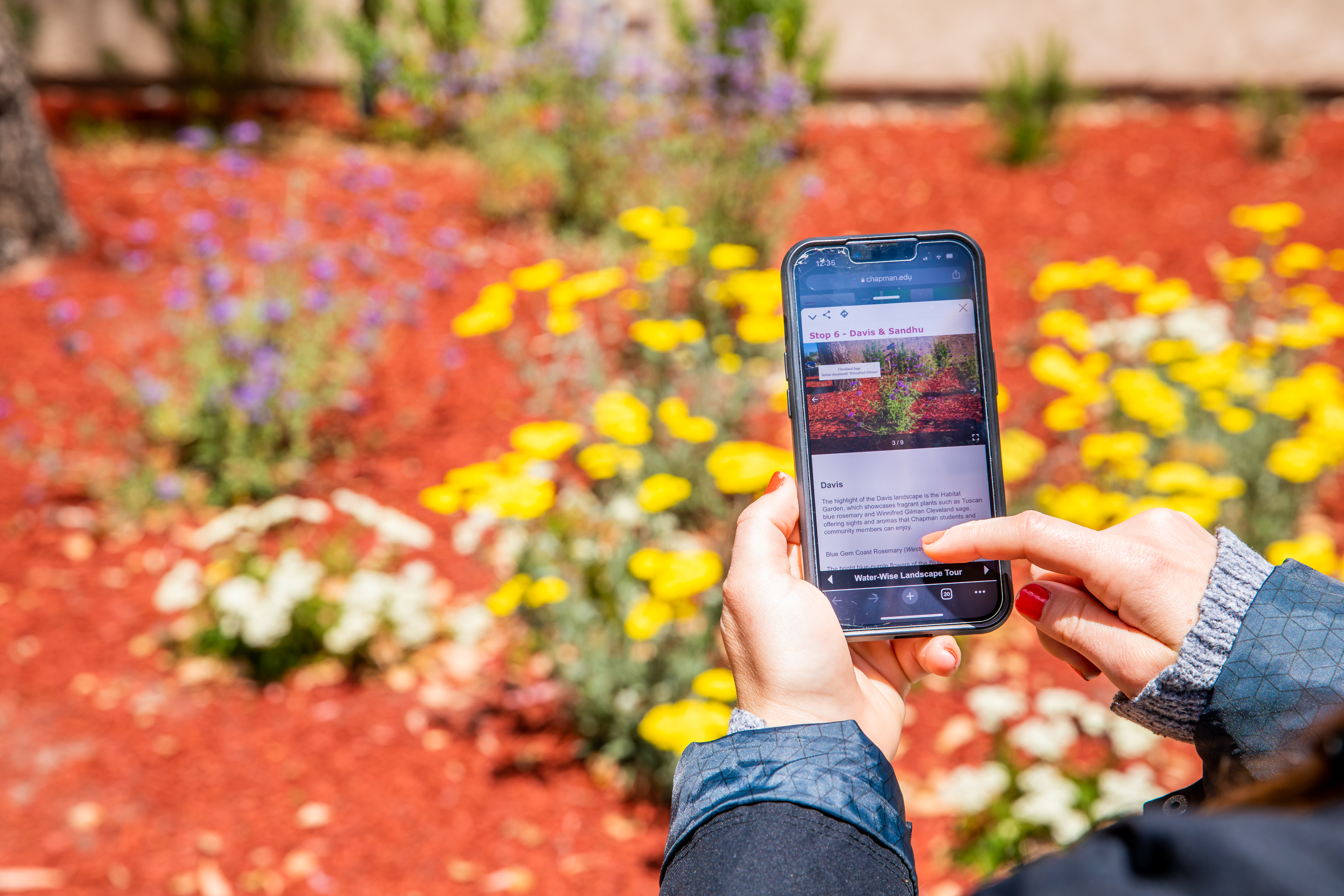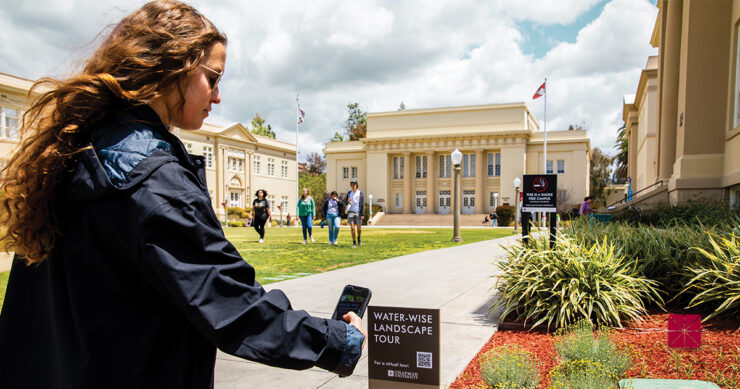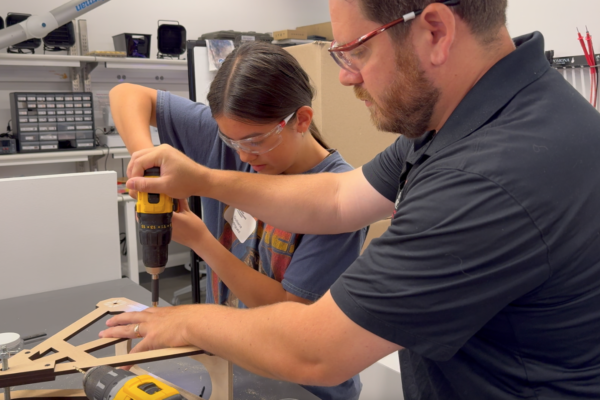 Pause for a moment to admire the vibrant flowers of the ruby glow tea tree. Keep an eye out for pollinators as you pass the hummingbird yucca. Bend to get a closer look at the emerald green leaves of the carpet manzanita.
Pause for a moment to admire the vibrant flowers of the ruby glow tea tree. Keep an eye out for pollinators as you pass the hummingbird yucca. Bend to get a closer look at the emerald green leaves of the carpet manzanita.
These verdant opportunities extend throughout Chapman University. And now the experiences are more immersive thanks to signage with QR codes that link to images and information about the drought-tolerant landscaping flourishing all across campus.
Chapman’s new virtual Water-Wise Landscape Tour has an elemental goal – to enrich the Chapman Experience by inviting community members to stop and smell the sage. But there’s another objective as well.
“No matter which side of campus you enter, and no matter where you’re walking on campus, you’re going to see beauty in the fulfillment of the university’s efforts to reduce our use of irrigation water,” said Jenny Kaufman, manager of energy conservation and sustainability at Chapman.

Launch of the Water-Wise Landscape Tour on April 28 culminated the latest phase of Chapman’s commitment to water conservation. That effort, which began in 2014, includes:
- Introducing drip irrigation to non-turf landscape areas.
- Retrofitting sprinklers with low-flow nozzles in recreational turf locations.
- Adding more than 4,100 square feet of artificial turf to Residence Life areas.
- Replacing water-intensive plants with drought-tolerant landscaping throughout the campus.
- Educating students and others about opportunities to reduce personal water use.
By the end of this academic year alone, 25,369 square feet of grass on the main campus in Orange will have been converted to drought-tolerant landscaping, resulting in an estimated annual water savings of 712,362 gallons.
It’s a moment to relish the progress and to spread the word that adopting a water-wise approach doesn’t have to sacrifice visual or overall sensory appeal, Kaufman said.
“I like that we’re making it a celebration of California-native and drought-tolerant plants as we share information that we hope will get people to consider adding them to their own landscapes at home,” she said.
It’s easy to begin the campus landscape tour experience. Just look for signs that read “Water-Wise Landscape Tour” at six locations:
- Stop 1 – Memorial, Bertea and Moulton Halls
- Stop 2 – Reeves, Smith and DeMille Halls
- Stop 3 – Musco Center for the Arts
- Stop 4 – Walnut Avenue and Grand Street
- Stop 5 – Walnut Avenue and Center Street
- Stop 6 – Davis Apartments and Sandhu Residence Center
Then use your smartphone and the QR code on the signs to access information about the landscaping near each stop on the tour.
“We’ve gotten great feedback on the cohesive look of the landscapes and the nice diversity of species represented,” Kaufman said. “We think people will also appreciate all the details they’ll find on the virtual tour.”
Kaufman lauded the many contributions of Chapman’s Campus Planning and Design group as well as longtime campus contractor BrightView for realizing the university’s vision for water-wise landscaping.
Going forward, Chapman will continue to identify opportunities to convert landscaping on the Main Campus in Orange as well as at the Rinker Health Science Campus in Irvine, Kaufman added. The university does so even as it recognizes the need to preserve some grassy areas that serve the recreational needs of students.
“I would encourage everyone to take a walk around campus and visit the QR codes to learn about the plants and pollinators they pass every day,” Kaufman said. “I think those who take the tour will appreciate the intentional choices that were made and the intrinsic value that’s been added.”




